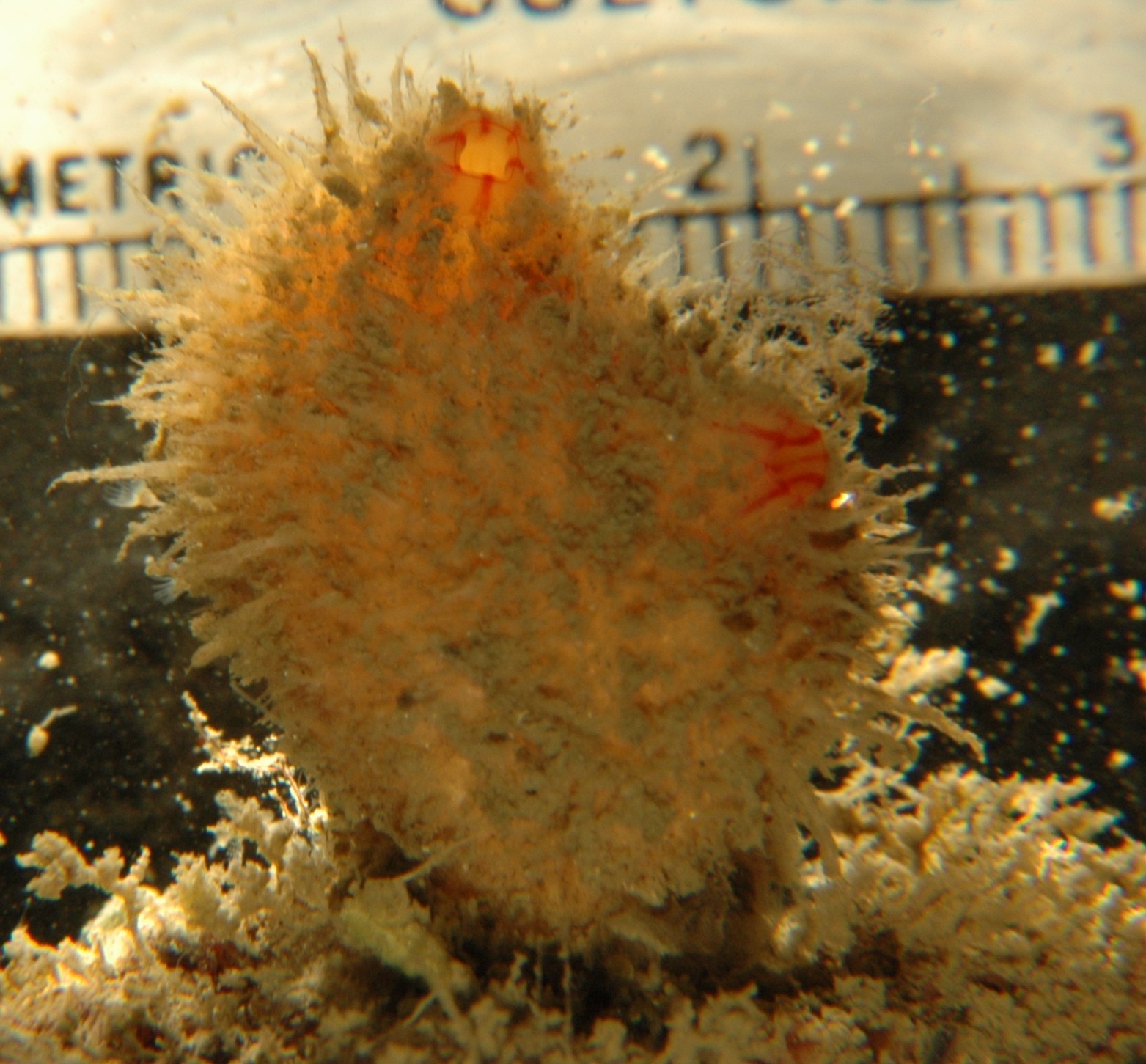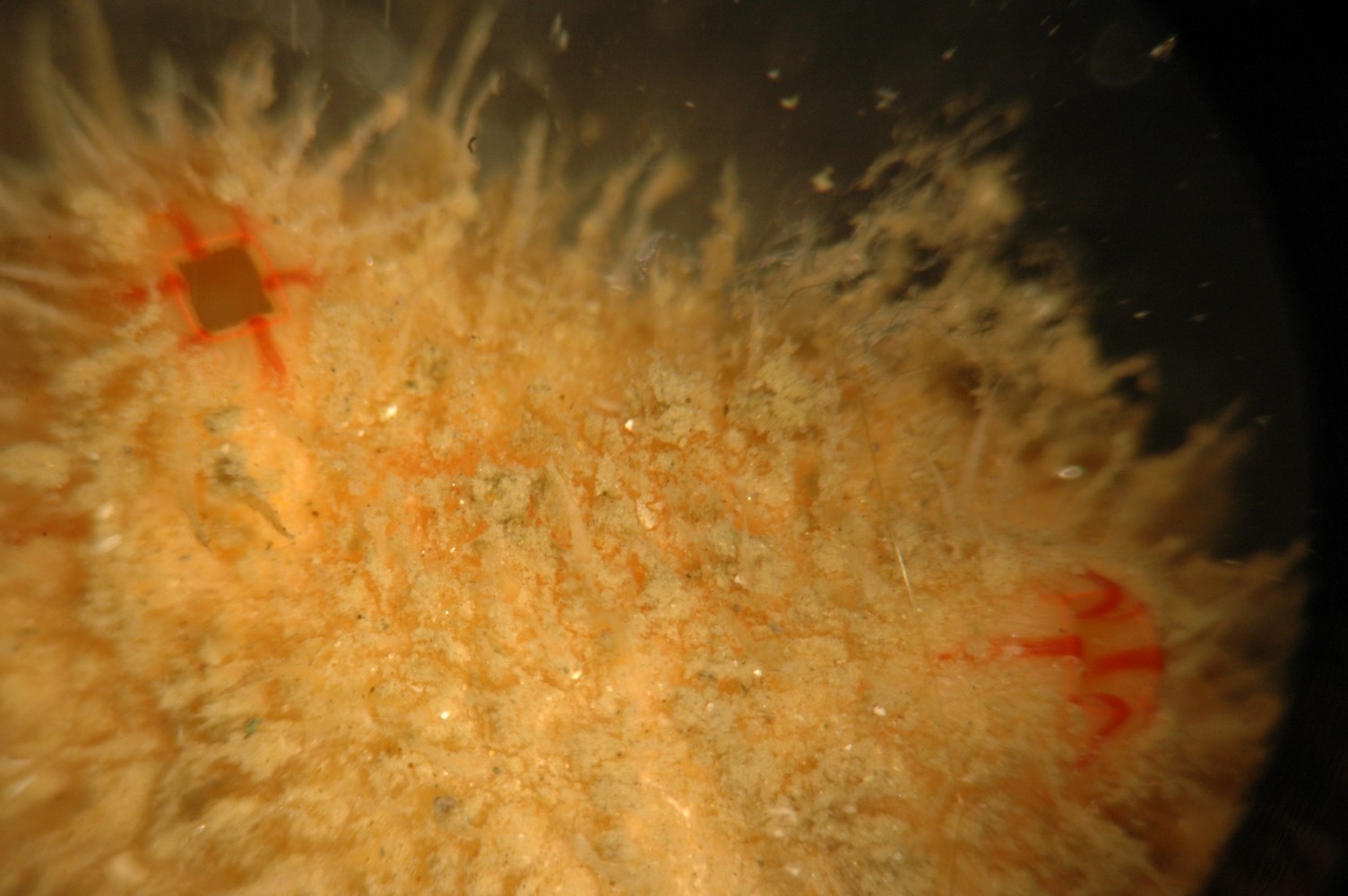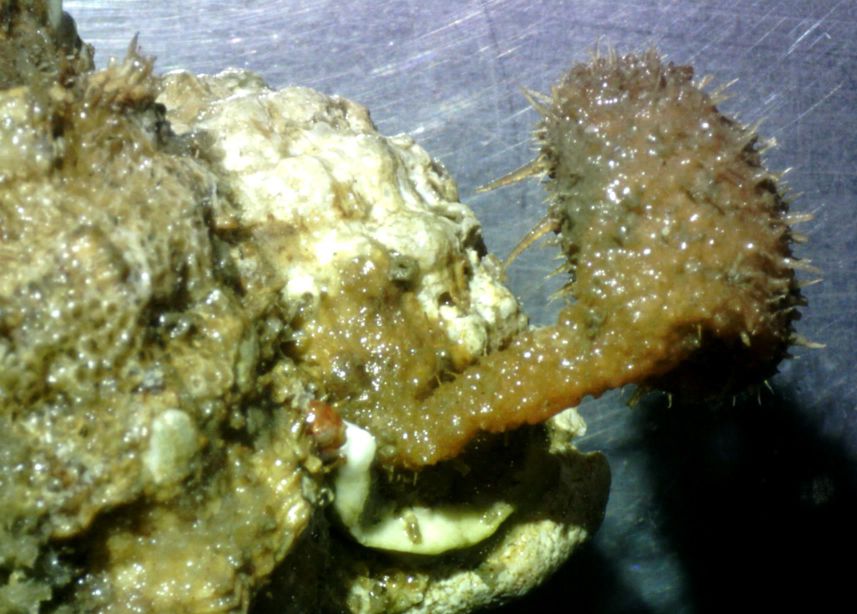Boltenia villosa (Stimpson, 1864)Common name(s): Spiny-headed tunicate, hairy sea squirt, stalked hairy sea squirt, bristly tunicate |
|
| Synonyms: |  |
| Phylum Chordata
Subphylum Urochordata Class Ascidiacea Order Stolidobranchia Family Pyuridae |
|
| Boltenia villosa from subtidal near Rosario. Marks in background are mm, with cm noted. | |
| (Photo by: Dave Cowles, July 2006) | |
How to Distinguish from Similar Species: The only other solitary ascidians with an opaque tunic and with spinelike projections have no distinct stalk and the projections have side branches arranged in circles.
Geographical Range: Southern Alaska to San Diego, CA. Most common on outer coasts.
Depth Range: Low intertidal to 100 m
Habitat: Attached to hard substrates in water with good circulation
Biology/Natural History: This species concentrates vanadium in its body tissues (500-750 ppm by dry weight, excluding the tunic). These are some of the highest levels of vanadium concentration seen in tunicates. Diet includes crustacean nauplii, mollusc veligers, and eggs. Predators include the seastars Dermasterias imbricata and Orthasterias koehleri, and the predatory Oregon triton snail Fusitriton oregonesis . Sometimes contains the symbiotic crab Pinnotheres pugettensis or the several species of copepods. Gametes are ripe year-round, but mainly in the summer. Fertilization is external. Settle 6 hours to 5 days after hatching.
| Return to: | |||
| Main Page | Alphabetic Index | Systematic Index | Glossary |
References:
Dichotomous Keys:Flora and Fairbanks, 1967
Kozloff 1987, 1996
Smith and Carlton, 1975
General References:
Gotshall,
1994
Kozloff,
1993
Morris
et al., 1980
O'Clair
and O'Clair, 1998
Sept,
1999
Scientific Articles:
Zeng, Liyun, Molly W. Jacobs, and Bill J. Swalla, 2006. Coloniality has evolved once on Stolidobranch ascidians. Integrative and Comparative Biology 46:3 pp 255-268
Web sites:
General Notes and Observations: Locations, abundances, unusual behaviors:

This closeup of the individual above shows the siphons partly open.

This small stalked individual, only 1 cm long, is attached near the apex of an occupied Oregon triton shell. Photo by Dave Cowles, July 2020
Authors and Editors of Page:
Dave Cowles (2006): Created original page